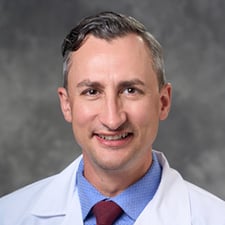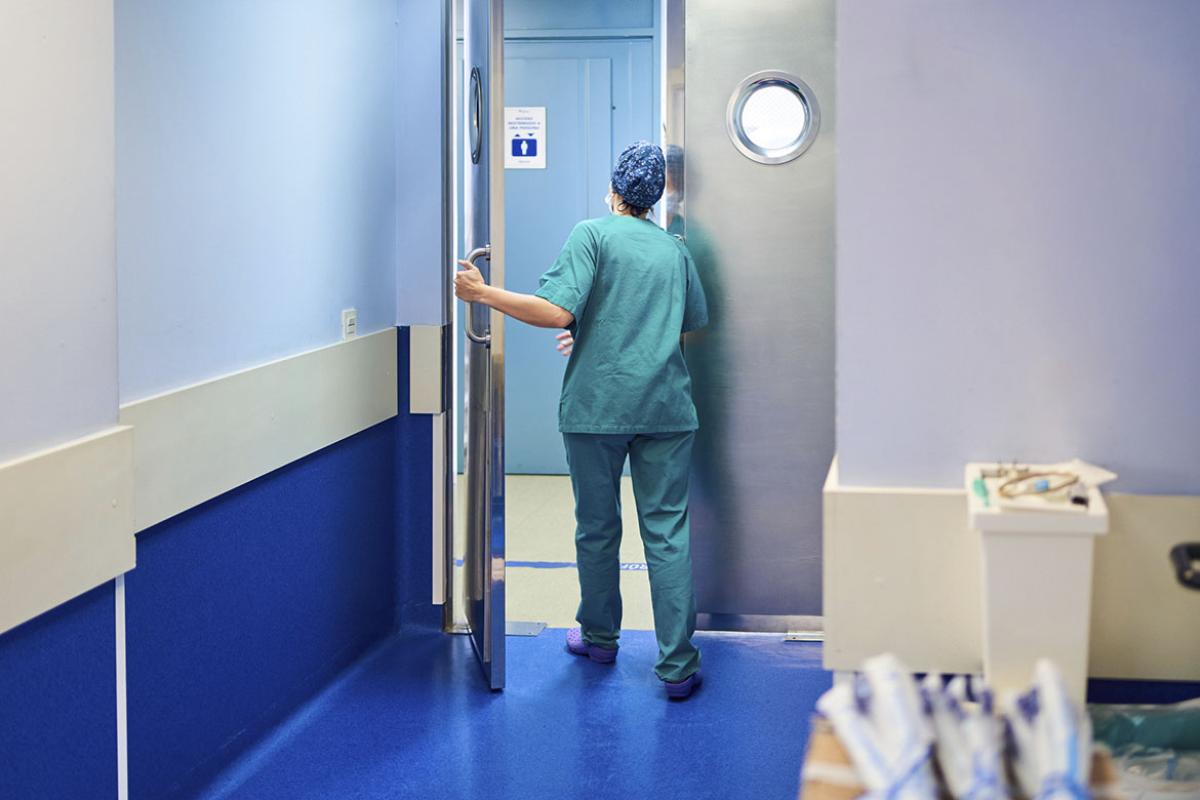Parkinson’s disease is the second-most common neurodegenerative disorder after Alzheimer’s disease and affects 10 million people worldwide. Characterized by symptoms such as tremors, stiffness and difficulties with movement, Parkinson’s disease impacts not only those diagnosed but also their families and caregivers. While the disease primarily affects older adults, cases in younger people have highlighted its wide-reaching implications and the urgent need for greater awareness, support and research.
In the U.S., nearly 1 million people are living with Parkinson’s disease, with about 90,000 being diagnosed each year. By 2030, this number is expected to rise to 1.2 million. Meanwhile, men are 1.5 times more likely to have Parkinson’s disease than women, according to the Parkinson’s Foundation.
The AMA’s What Doctors Wish Patients Knew™ series gives physicians a platform to share what they want patients to understand about today’s health care headlines.
In this installment, Isaac Goldszer, MD, a movement disorder neurologist at Henry Ford Health, discusses what patients need to know about Parkinson’s disease.
Henry Ford Health is a member of the AMA Health System Program, which provides enterprise solutions to equip leadership, physicians and care teams with resources to help drive the future of medicine.
It’s a lack of movement
“Parkinson’s is a syndrome that is diagnosed based on the presence of a set of physical exam findings, which are tremor, rigidity, akinesis, or a lack of movement, and postural instability,” Dr. Goldszer said. “It’s different for everyone, but the most common symptom is usually something related to a problem with movement of the hands.
“Typically in Parkinson’s we see a tremor on one side, not both sides. That would be typical of other issues,” he added. “But a tremor in one hand and difficulty using that hand—so dexterity problems—are typically what we see.”
Most Parkinson’s is not genetic
While researchers are beginning to better understand the role of genetics in Parkinson’s disease, most people with Parkinson’s do not seem to have a genetic link.
“Early onset Parkinson's, juvenile Parkinson's forms, can be genetic.” said Dr. Goldszer. “There's an enormous amount of interest in the genetic relationships in Parkinson's disease, particularly with the GBA gene, which is up to 10% of Parkinson's patients.”
The number is higher in population subsets such as Ashkenazi Jews. Several other genetic variants have been linked to Parkinson’s as well.
Parkinson’s is a disease of aging
“The main and most important risk factor associated with Parkinson’s is aging,” said Dr. Goldszer. “What we don’t know is what it is about aging that causes Parkinson’s disease.”
“The aging process causes a loss of the neurons in the substantia nigra,” which is a small brain structure that plays a vital role in controlling movement, mood and other cognitive functions, he explained. “We know that there's a u-shaped curve where there's up to 500,000 of these cells that degenerate in Parkinson's disease, and then they start to die off with age. By the 70s and 80s, the average person has lost up to 10% of these.
“And then, in Parkinson’s disease, there’s something that takes place where they die off faster and earlier, and we know that people have symptoms when they lose about 60% of those cells,” he added. “By the time the symptoms manifest, the issue is that it might not be possible to recover function, meaning those cells are dead—we’re not going to be able to bring them back to life.”
“So, how do we identify people earlier? How do we prevent Parkinson’s disease? That’s really where we’re going in the field. We want to prevent this,” Dr. Goldszer said.
Every Parkinson’s is different
“There is this susceptible population of cells in the substantial nigra and the reason for that is because dopamine seems to be oxidizing,” Dr. Goldszer said. “We know that this population of cells dies off in Parkinson’s.”
But “it’s not just a brain disease. It’s a body disease and we know that it’s not just these exam findings of tremor and rigidity, but this is a disease that affects everything in your life,” he said, noting that “you’re seeing people with sleep disorders that predate their symptoms of Parkinson’s, people with mood disorders that predate their symptoms of Parkinson’s.
“There are people with constipation, lightheadedness and dizziness when they stand—we call that orthostasis or orthostatic hypotension,” Dr. Goldszer added. “There are also issues with a lack of sense of smell, which can be quite debilitating, and you lose weight or have trouble tasting your food.”
“It’s important to know and remember that every single Parkinson’s is different—one patient’s experience is not another’s—and that can be a positive thing for people to hold onto,” he said. “You don’t have to look like Michael J. Fox and most certainly are not going to because we know that this is a very individualized thing. Not everybody looks the same.
“But it can also be alienating because you can go to an exercise class for Parkinson’s and see people who don’t look like you and it can be frustrating,” Dr. Goldszer added.
Diagnosis is largely a physical exam
“Ultimately, this is a clinical diagnosis. We make the diagnosis based on physical exam findings and a history,” Dr. Goldszer said. “Which is one reason that I went into this field. I felt like Parkinson’s and movement disorders were really a pure form of medicine and that this was what I was trained for as a physician—to get a history, do a physical exam and make a diagnosis.”
“What I recommend to people who have a concern about tremor is to see a movement disorder specialist,” he said. “We have good evidence that movement disorder specialists did a better job of assessing and treating wearing off, looking into and making sure to ask about hallucinations and even prevented falls in patients better than general neurologists or internists.”
“The tests that we have—aside from the clinical exam, which is powerful and has been tested as being higher than 95% sensitive in some populations—there’s a dopamine transporter scan, which can be quite helpful for distinguishing between the tremor that’s in both hands called essential tremor and the Parkinson tremor or Parkinson’s disease,” Dr. Goldszer said. “A DaTscan can help distinguish between those or for distinguishing between drug induced Parkinsonism where somebody’s been exposed to an antipsychotic drug such as aripiprazole, which is now being prescribed for even major depressive disorder.”
This “can produce symptoms of Parkinsonism and mimic idiopathic Parkinson’s disease, which is the classic age-related Parkinson’s disease,” he added.
There is no cure
“What we have in Parkinson’s is relatively good symptomatic management. What we don’t have is disease-modifying therapy and that’s really what we’re going for. We want a drug that will reverse this process,” Dr. Goldszer said.
There are now 27 medications approved by the Food and Drug Administration for Parkinson’s disease as well as “advanced therapies, including deep-brain stimulation,” he said, adding there are also “pipeline therapies, which includes 107 drugs and 136 clinical trials.”
Additionally, “there are medical devices and emerging iPhone apps that help track your symptoms throughout the day and help you log your medications and how you did,” Dr. Goldszer said. There are also “new emerging devices that can monitor your tremor and talk to your deep-brain stimulation implant.”
Research is ongoing
“We don’t want a drug to try to rescue cells that are already dead. That’s a losing wager. We want to identify people who are at risk such as people with REM sleep behavior disorder where people act out their dreams at night,” Dr. Goldszer said, adding that “up to 50% of these people might go on to develop a Parkinsonian syndrome.”
There is a need to look at “people with genetic risk factors too,” he said. “Not because this is overwhelmingly a genetic syndrome, but because those are the people who we know are at risk and where we’re going to be able to intervene.”
Exercise can help
“The one thing we do have that slows down Parkinson’s or prevents Parkinson’s disease is exercise,” Dr. Goldszer said. “We know that exercise is good for preventing cardiovascular disease. We know that it makes the blood vessels stronger and that there is a brain derived neurotropic growth factor where we’re laying down new blood vessels and that it’s strengthening those types of connections.
“So, that’s strong evidence that potentially the exercises work by slowing down atherosclerotic disease and reducing vascular risk,” he added. As for what exercises to do, research has suggested that the type of exercise that worked better “was cardiovascular exercise—you have to get your heart rate up,” such as biking, swimming, vigorous yoga classes and running.
“It seems like cardio is really what you need to get your heart rate up,” Dr. Goldszer said, adding that it is also important to pay attention to muscle loss because “loss of muscle tissue is just absolutely to be avoided at all costs, so weight training, even as simple as walking with a backpack on while hiking is just fantastic, and it promotes bone health as well.”
Boost dopamine levels naturally
Dopamine is a neurotransmitter that plays a vital role in regulating movement, motivation and memory. In Parkinson's disease, the loss of dopamine-producing nerve cells leads to a reduction in dopamine levels. This can cause tremors, rigidity, slowness of movement, impaired balance and coordination, motor impairment and cognitive deficits.
One medication option to increase dopamine is with levodopa. The other option is dopamine agonists, which mimic the effects of dopamine without having to be converted. But there are other ways to increase dopamine levels.
“There are free sources of dopamine. Dopamine is endogenous—we make it ourselves. And even advanced Parkinson’s patients at the end of disease still have some dopamine-containing neurons,” Dr. Goldszer said. “They’re still making some, so how do we maximize that so we don’t need as much medicine and we don’t get as much side effect of medication?”
“Music enhances dopaminergic signaling in the midbrain and we know that music therapy is powerful—or just put on some tunes,” he said.
“A cold shower in the morning has been studied and actually does work too,” Dr. Goldszer said.
“But a healthy sex life, cold shower, exercise and music are highly recommended,” he added.
Caregivers must care for themselves too
For caregivers of patients with Parkinson’s disease, “it’s easy to get lost in the patient and forget that you’re a person as well, so take care of yourself too,” Dr. Goldszer said. “The other thing to know is it takes a village, so you have to engage with the resources that are out there.”
“We have the Michigan Parkinson Foundation in Detroit, which is just an awesome resource for our patients,” he said, adding that “the Michael J. Fox Foundation has also been phenomenal as well as the Parkinson’s Foundation. The list goes on.”
“This is not a rare disease. There are a lot of resources out there, so join a support group or do an activity you enjoy doing. Make sure that you get the support you need to be a good caregiver,” Dr. Goldszer said.





